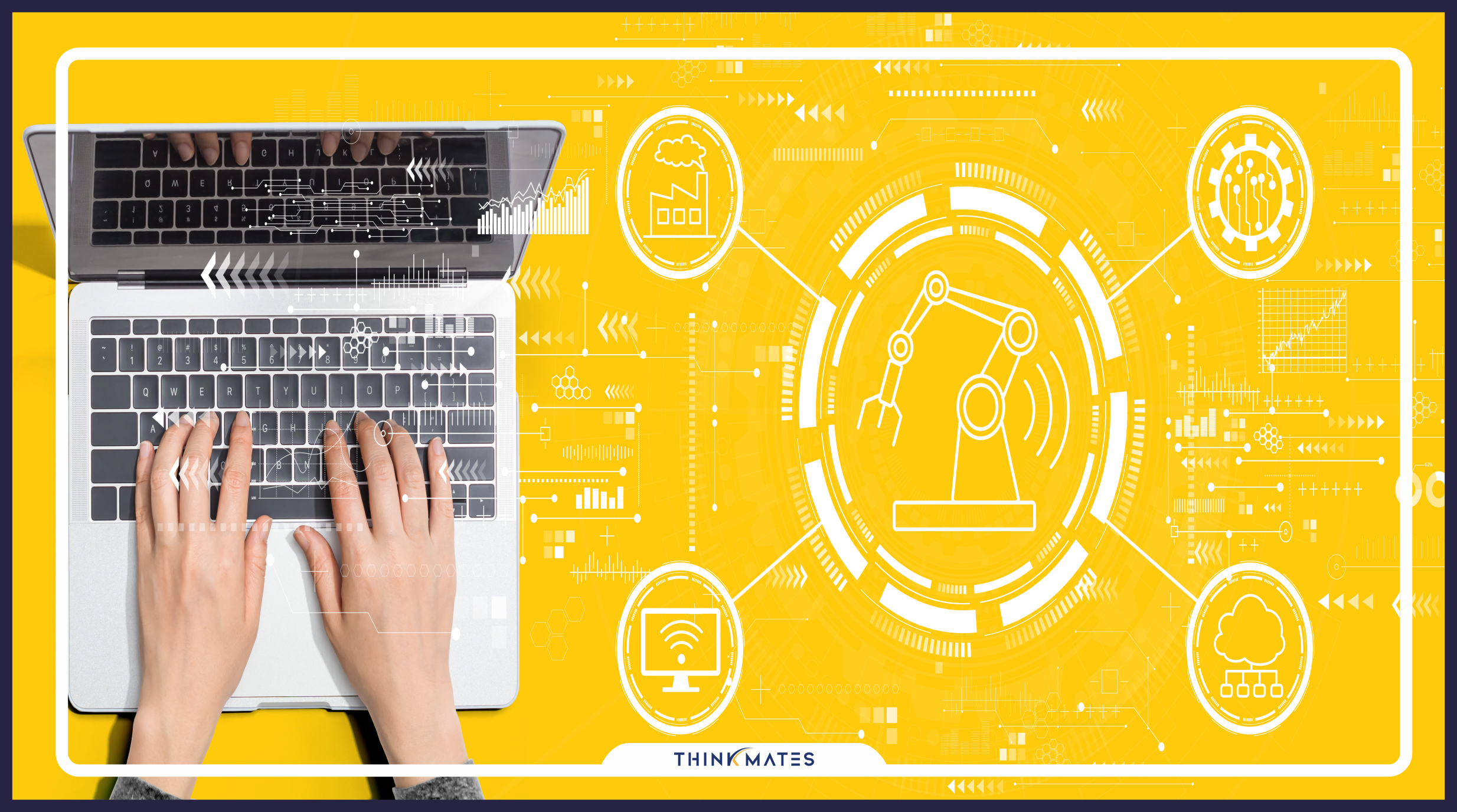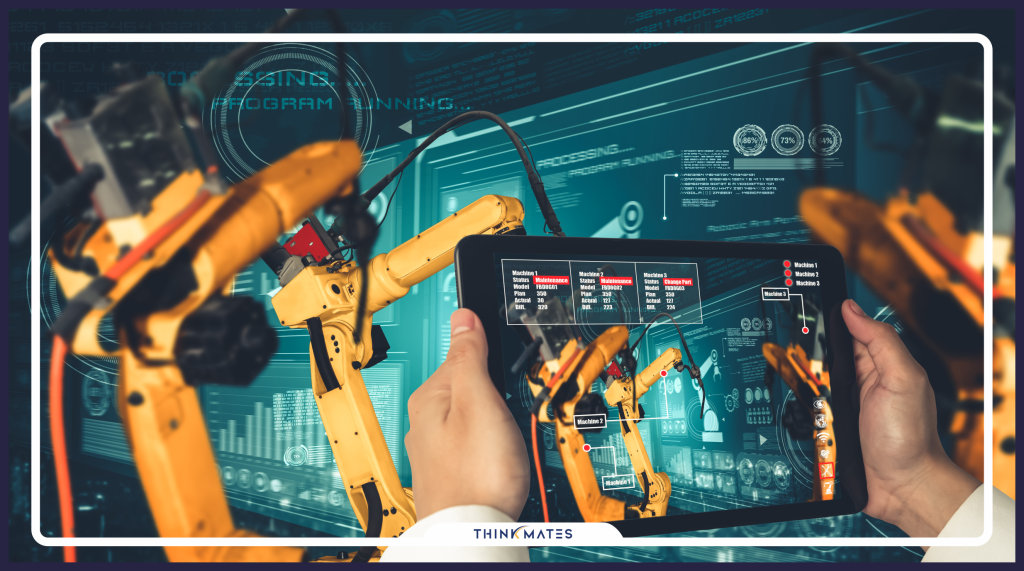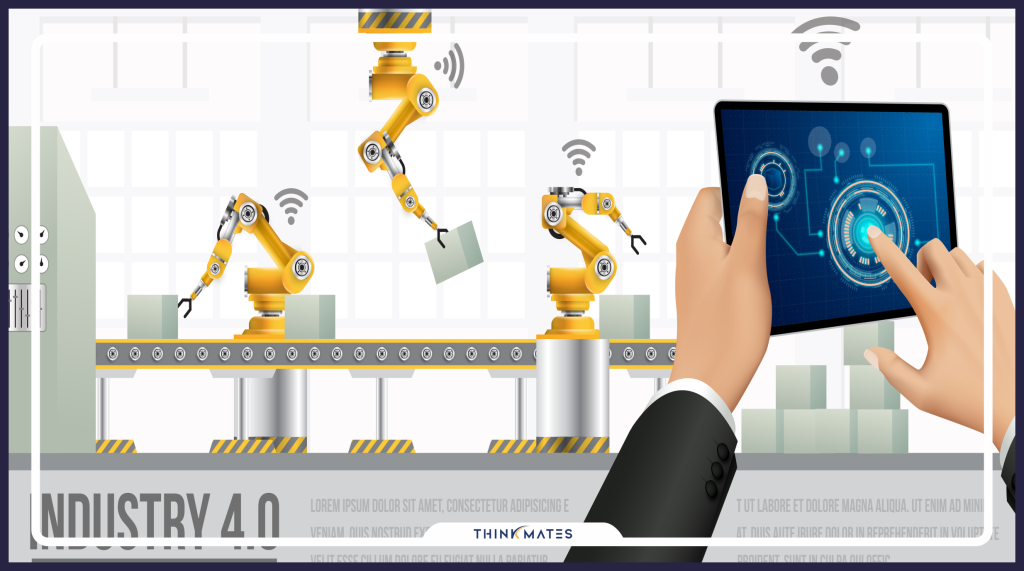
Mechanical Engineering is going to play a vital role for the future as part of technology and innovation.
There are many trending technologies such as:
- Industry 4.0
- Automation
- Robotics
- Electrical Vehicle

As part of Industry 4. the Robotics is the base product Automation for the Manufacturing Industry. Robotics is the interdisciplinary branch of technology that deals with the design, construction, operation and application of robots. It aims to develop machines that can replicate human actions. Mechanical engineering is a significant branch in engineering, having to its credit the design and uses of some wonders such as aeroplanes, ships, automobiles, and automation. Robotics in mechanical engineering encompasses the composition and structure of robots. It aims to design intelligent machines that can help and assist humans in their day-to-day lives and keep them safe when used in dangerous environments.
Robotics: Scope and Applications

Robots may be made of any form and size. Still, the bio-inspired models are designed to resemble human conditions and can replicate human behaviours. They can simulate human speech, cognition, walking, lifting and other human activities. Robots may require user input to operate, while different types may function autonomously.
Robotics Engineering has a broad set of applications. Robots are used in the manufacturing, assembly, packaging, earth and space, transport, weaponry, surgery, research and mass production of consumer durables and industrial goods. On integration with IA, robots could learn to perform tasks more accurately, reliably and cheaply than humans. With such a vast and ever-advancing arena of Robotics, the career avenues for Mechanical Engineering students are limitless. The college degree awarded will be a Mechanical Engineering degree, but many institutes may offer a specialised Robotics Engineering degree.
These engineers can find jobs in the industries that use robotics at scales, such as manufacturing, energy, healthcare, and mining.
With the trend of continuous technology advancement, Robotics Engineering will be a much-in-demand career. Human Resource demand will be high, with good salary pay-outs. The skills essential to pursue a career in Robotics Engineering will typically be:
- Building or hands-on construction of the robots and the tools and processes to build the robots. Being adept at 3D printing technology will be favourable too.
- Computer-aided Draft and Design to work upon blueprints for the robotic systems using 3D modelling programs.
- Research and Development – Robotic systems require research, redesign and upgradations. So, academic researchers, experts at critical thinking and soft skills, analysis and communications will enable valuable knowledge in research and design.
Robotic Engineers in jobs are primarily responsible for designing, testing, and building robots that perform functions faster, efficiently, safer, and cost-efficiently than humans. Responsibilities of a Robotic Engineer will include:
- Defining problems, data collection, and presenting facts and conclusions
- Evaluating and calibrating systems for optimal efficiency
- Maintaining accurate records and documents
- Programming of the complex robotics systems
- Reading, writing, analysis, and interpretation of the technical procedures and schematics
- Research, develop and sustain robotics systems and components
- Troubleshoot the robotics systems and applications
- Write software, build electronics, and design mechanisms
Based on their job responsibilities, the Job roles of the Robotic Engineers may be Robotic Research Engineers, Robotic Engineers for the manufacturing as Robotic Test Engineers or Automation System Engineers. They can efficiently function from the designing phase to the machinery assembly line phase in the robotic industry. Robotic Engineers are skilled and responsible for creating an integrated environment between the people and machinery.
The marvels of Robotic Engineering are evident. The popularity of Google Home, Amazon Echo and Apple’s Siri are unprecedented. The concept of Smart Homes for convenience and the ability to save on utility improves upon comfort and security. The world of computing is boundless, and the future of Robotics in mechanical engineering is bright.
Robotics in Industry 4.0 & Automation
Industry 4.0 refers to the present industrial revolution, which is being driven by the advancement of robots, automation, and the internet of things (IoT). The term “Industry 4.0” denotes an era of “smart” systems and digital integration; it was coined in 2011. The related trend is reverberating throughout practically every business on the planet.

Robotics, automation, and artificial intelligence (AI) are expected to take control as the global industrial industry approaches its fourth revolution. The number of active industrial robots globally is rising by about 14% year on year, and automation results in new types of robots with increased usefulness and function. Future factories will most certainly include robots and people working together to fulfil customer demand – a unique environment for which business owners need to be prepared.
Robotics can:
- Improve productivity
- Lower overhead costs
- Innovative technology can reduce human error
EV Technology

There were 10 million electric cars on the world’s roads at the end of 2020, following a decade of rapid growth. Electric car registrations increased by 41% in 2020, despite the pandemic-related worldwide downturn in car sales in which global car sales dropped 16%. Around 3 million electric cars were sold globally (a 4.6% sales share), and Europe overtook the People’s Republic of China (“China”) as the world’s largest electric vehicle (EV) market for the first time. Electric bus and truck registrations also expanded in major markets, reaching global stocks of 600 000 and 31 000 respectively.
The resilience of EV sales in the face of the pandemic rests on three main pillars:
- Supportive regulatory frameworks: even before the pandemic many countries were strengthening key policies such as CO2 emissions standards and zero-emission vehicle (ZEV) mandates. By the end of 2020, more than 20 countries had announced bans on the sales of conventional cars or mandated all new sales to be ZEVs.
- Additional incentives to safeguard EV sales from the economic downturn: some European countries increased their purchase incentives and China delayed the phase-out of its subsidy scheme.
- The number of EV models expanded and battery cost continued to fall.
Vehicle manufacturers announced increasingly ambitious electrification plans. Out of the world’s top 20 vehicle manufacturers, which represented around 90% of new car registrations in 2020, 18 have stated plans to widen their portfolio of models and to rapidly scale up the production of light-duty electric vehicles. The model availability of electric heavy-duty vehicles is also broadening, with four major truck manufacturers indicating an all-electric future.
Consumer spending on electric car purchases increased to USD 120 billion in 2020. In parallel, governments across the world spent USD 14 billion to support electric car sales, up 25% from 2019, mostly from stronger incentives in Europe. Nonetheless, the share of government incentives in total spending on electric cars has decreased over the past five years, suggesting that EVs are becoming increasingly attractive to consumers.
The near-term outlook for EV sales is bright. In the first-quarter of 2021, global electric car sales rose by around 140% compared to the same period in 2020, driven by sales in China of around 500 000 vehicles and in Europe of around 450 000. US sales more than doubled relative to the first-quarter of 2020, albeit from a much lower base.


